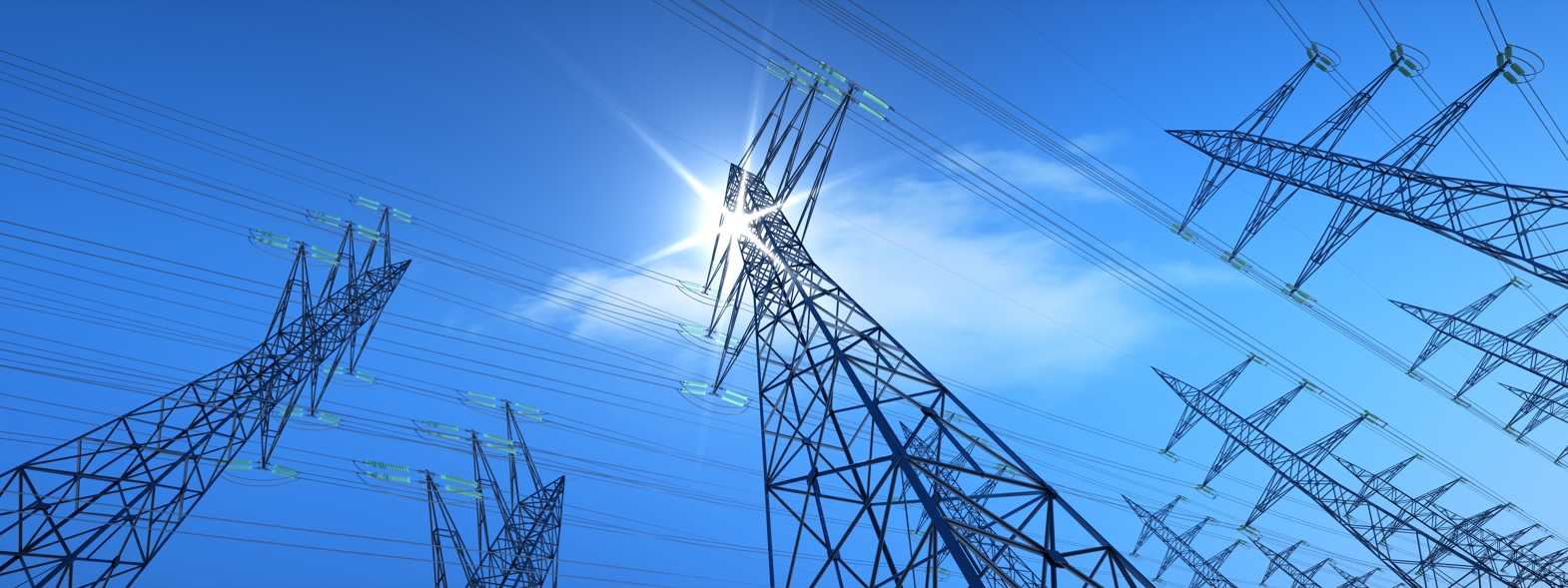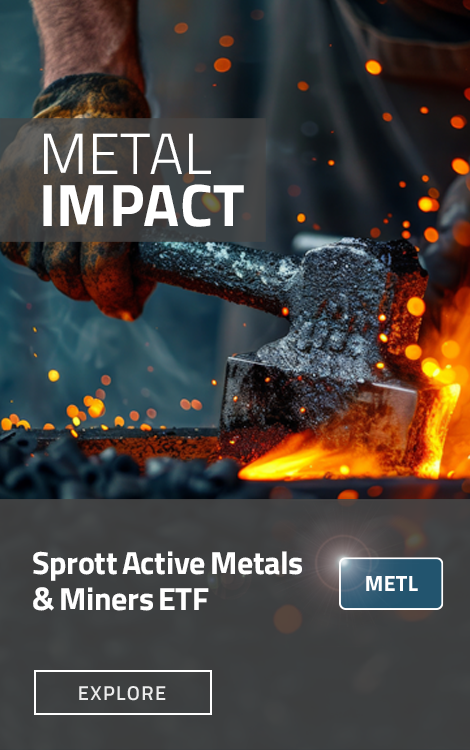For the latest standardized performance and holdings of Sprott Active Metals & Miners ETF (METL), please visit METL. Past performance is no guarantee of future results.
Key Takeaways
- Steel Is Essential to Global Electrification: Steel is indispensable for meeting global electricity demand, underpinning infrastructure, transport and the grid.
- China Dominates Global Steel Production: China now produces over half of the world’s steel, a dramatic shift from Western dominance 50 years ago.
- Green Steel Is a Fast-Growing Segment: Green steel is a fast-growing market segment; producers may enjoy lower energy costs and preferential access to capital.
- Supply Chain Security: Governments are incentivizing domestic production and recycling to reduce dependency on foreign supply.
Steel is one of the world's most important engineering and construction materials, essential to all transport and infrastructure. However, steel is often overlooked as crucial in meeting increased global electricity demand. The International Energy Agency (IEA) estimates that global electricity demand will rise by 169% between 2023 and 2050.1 Evolving energy systems rely heavily on critical materials and decarbonization, with growth in the East driven by urbanization and energy security, and in the West by AI, data centers and reshoring. Vast quantities of steel will be needed to meet this demand.
Steel offers unmatched strength and one of the best strength-to-weight ratios among materials.
In its simplest form, steel is a mix of iron and carbon. There are four primary types of steel: carbon, stainless, alloy and tool. Iron ore (rocks and minerals rich in iron) is one of the earth’s most abundant metals, and the largest reserves can be found in Brazil and Australia.
Most of the world’s steel is produced by China, which in 20232 produced more metal than the rest of the world combined (See Figure 2). China's dominance represents a dramatic shift from 50 years ago, when the U.S., Europe and Russia produced nearly 90% of the world’s steel. In 2023, for example, the U.S. made less than 5% of global steel (see Figure 1).3
Figure 1. China Is the World’s Largest Producer of Steel (2024)
Source: Worldsteel.org. Data as of 12/31/2024.
Figure 2. A 50-Year History of Global Steel Production
Source: Elements by Visual Capitalist.
Steel’s Role in Meeting Global Electricity Demand
Steel is the backbone of the global energy system. Its strength, durability, recyclability and resistance to corrosion make it indispensable across every stage of electricity generation, transmission and storage.
In traditional energy, steel forms the high-pressure pipelines, storage tanks, drilling equipment and offshore platforms that drive the oil and gas industry. It is also the foundation of fossil fuel and nuclear power plants, where boilers, turbines and structural frameworks must endure extreme heat and pressure.
The addition of renewable energy sources requires even greater amounts of steel. Wind turbines are 66% to 79% steel by mass,4 solar power needs 35–45 tons of steel for each new megawatt of capacity5 and hydroelectric dams rely on reinforced concrete with embedded steel. China is the dominant leader in solar panel manufacturing and installation, and is home to the world’s largest solar farms. As of the end of 2024, China's total installed solar capacity was 887,930 MW, nearly five times that of the second-ranked country, the United States.
Figure 3. Panda Solar Station in Datong, Shanxi Province of China
Source: Getty Images. Aerial view of the Panda Solar Station on August 14, 2017, in Datong, Shanxi Province of China. The first Panda Solar Station began operations in Datong on August 10, 2017.
Steel is equally critical to electrified transport. An electric vehicle contains about 1,200 kilograms of steel,6 from the chassis and body frame to the protective battery enclosure. Specialized electrical steel, amounting to 40–100 kg per vehicle, is used in the EV's motor.
Finally, steel underpins the power grid. Nuclear reactors rely on stainless steel in piping and cooling equipment, every electrical transformer contains a magnetic steel core, and transmission pylons and cables depend on steel for strength and reliability.
Figure 4. Steel Is Critical to Supporting All Sources of Global Electricity
Source: Ember (2025); Energy Institute - Statistical Review of World Energy (2025).
Green Steel Production: From Visionary to Viable
Green steel is produced using technology that significantly reduces or eliminates carbon dioxide emissions. Although green steel currently accounts for less than 1% of global steel production, demand is rising given policy and investment momentum, with Europe dominating market demand (see Figure 7).
Green steel is a niche sector within the steel industry that is growing very quickly.
In our view, green steel represents one of the most exciting growth areas in today's steel market. We have reached a tipping point where the rapid growth of cheap renewable power (hydro, hydrogen, nuclear) is rising. This allows countries with abundant renewable energy to produce green steel at a lower cost (given that electricity is the biggest input), making green steel more cost-competitive (providing sufficient scrap or Direct Reduced Iron feedstock). As green steel production continues to scale, it will likely only become more cost competitive.
Although projections vary widely, the global green steel market is conservatively estimated to be valued at US$6.2 billion in 2024 and is expected to reach US$20 billion by 2030, exhibiting a compound annual growth rate (CAGR) of 21.4% from 2025 to 2030 (see Figure 6).7 More aggressive estimates put the green steel CAGR at 56% for the next five years (to US$130 billion).8 By comparison, the overall global steel market size is projected to increase from US$1,470 billion in 2024 to about US$1,920 billion in 2030, with a much lower CAGR of 2.6%.9
Figure 5. Conservative Estimate: Green Steel vs. Total Steel Growth (2024-2030)
Although it represents a small portion of the global steel market, green steel is expected to nearly triple in size by 2030, from 0.5% of total steel to 1.30%.
Source: BCC Research. Green Steel Industry Growing Fast with 21.4% CAGR.
Traditional steel manufacturing involving integrated blast furnace-basic oxygen furnace (BF-BOF) plants accounts for ~9% of direct fossil fuel emissions, more than all the world’s cars and planes combined. It also represents one-third of global coal use.
Breakthroughs in green steel include hydrogen-based production and electric arc furnaces. Hydrogen-based production uses hydrogen gas (H₂) to convert iron ore into pure iron, a key input for steelmaking. Unlike conventional methods, hydrogen-based direct reduction produces only water vapor as a byproduct, eliminating carbon emissions. Electric arc furnaces melt scrap metal using high-power electric arcs.
Green steel technologies—especially those powered by hydrogen and renewable electricity—scale globally and are projected to reduce industry-wide CO₂ emissions by over 40% by 2040.10 With energy costs comprising up to 40% of steel production, green steel’s local cost competitiveness is already emerging, and economies of scale and technology improvements are expected to drive further reductions, enhancing its appeal as a long-term investment opportunity.
Figure 6. Europe Dominates the Green Steel Market
Source: Coherent Market Insights. Green Steel Market Size and Trends.
100% of structural steel is recyclable, and recycling scrap steel is sustainable. Recycling saves over 60% of the energy used to produce it from raw materials. Today, 97% of steel by-products are reused. The overall recycling rate for steel from all industries combined is 81%, with some construction segments reporting values as high as 98%.11
Figure 7. Types of Steelmaking Processes
Source: White & Case.
Steel in Sustainable Construction and Grid Modernization
Steel is the strongest construction material available, with the highest strength-to-weight ratio of any material. It is durable, flexible, ductile and non-combustible.
Steel plays a large part in climate-resistant infrastructure, with the development of high-performance weathering steel (HPWS) and high-strength steel (HSS). Research showcased that modern HPWS formulations can maintain structural integrity with minimal maintenance for up to 120 years in moderate environments and 75+ years in severe coastal or industrial settings—a substantial improvement over conventional steel’s 40- to 60-year lifespan.12 Additionally, recycled steel can help buildings earn Leadership in Environmental Design (LEED) certifications.
High-performance steel delivers 120-year resilience, strengthens modern grids and underpins advanced energy storage.
Global energy grids are being upgraded to handle the rapidly growing energy demand. Steel provides the strong, anti-corrosion backbone for the towers and poles that support new high-capacity lines. Additionally, efforts are being made to reduce energy loss and improve efficiency through developing advanced steel core wires and conductors. Construction of new lines is in full swing, with the Federal Energy Regulatory Commission (FERC) reporting 888 miles of new 345 kV+ transmission constructed in 2024.13
Steel is used in energy storage systems and the creation of batteries. In terms of batteries, steel serves as a casing for lithium-ion batteries. It plays a key structural role in various energy storage systems, including gravity-based setups that repurpose scrap metal, thermal energy storage (TES) tanks and CO₂ storage units integrated with turbine technology.
Global Steel Supply Chains and National Security
Steel has become a strategic material at the center of global energy security. With China producing more than half the world’s crude steel and Brazil and Australia dominating iron ore supply, the industry is highly concentrated and vulnerable to geopolitical disruption. We saw this in 2021. Steel prices soared in 2021 due to a significant imbalance between demand and limited supply, primarily driven by the COVID-19 pandemic and its aftermath. Pandemic-related disruptions led to decreased production, while government stimulus, increased consumer spending on goods and a rapid economic rebound in construction and manufacturing created overwhelming demand for steel. This, coupled with supply chain bottlenecks and labor shortages in key sectors like shipping, created a shortage of raw materials and finished steel, pushing prices to historic highs by the middle of 2021.
Figure 8. Iron and Steel Prices Peaked in the Aftermath of COVID (2016-2025)
Source: U.S. Bureau of Labor Statistics via FRED®.
Today, trade measures such as U.S. Section 232 tariffs and the EU’s Carbon Border Adjustment Mechanism (CBAM) have already reshaped supply chains, while tightening carbon regulations are placing traditional high-emission producers at a disadvantage. At the same time, steel underpins critical infrastructure, from power grids and pipelines to transport and defense systems, making reliable access a national security priority.
The transition to green steel adds another layer of geopolitical complexity. Nations with abundant renewable power, such as the Nordics, Australia and the Middle East, are positioning themselves as future hubs of low-carbon steel production. Meanwhile, governments are pursuing onshoring and recycling strategies to reduce exposure to foreign supply shocks and carbon penalties.
As global electricity demand accelerates, steel is no longer just an industrial commodity but a strategic asset, with its supply and decarbonization pathways shaping both economic resilience and energy security.
Steel: From Backbone to Skeleton Key14
As the world races to meet surging electricity demand and decarbonize its energy systems, steel emerges as a foundational material and a strategic solution. From wind turbines and solar panels to electric vehicles and grid modernization, steel’s unmatched strength, recyclability and versatility make it indispensable across every sector, driving the future of cleaner energy.
We believe early green steel adopters are positioned to capitalize on a growing trend that favors low-carbon materials.
Demand for green steel is rising as automakers, construction firms and renewable energy developers seek low-carbon materials to meet net-zero commitments and regulatory requirements. Governments are adding pressure through carbon pricing, procurement standards and environmental mandates, making low-emission steel more attractive. This convergence of corporate pledges, policy incentives and consumer expectations is creating a nascent and impactful growth area in steel demand.
Footnotes
Important Disclosures & Definitions
An investor should consider the investment objectives, risks, charges, and expenses carefully before investing. To obtain a Sprott Active Metals & Miners ETF Statutory Prospectus, which contains this and other information, visit https://sprottetfs.com/metl/prospectus, contact your financial professional or call 888.622.1813. Read the Prospectus carefully before investing.
The Sprott Active Metals & Miners ETF is new and has limited operating history. Investors in the Fund should be willing to accept a high degree of volatility in the price of the Fund’s shares and the possibility of significant losses. The Fund will be concentrated in metals, mining and related industries. Companies in the metals and mining industry are susceptible to fluctuations in worldwide metal prices and extraction and production costs. In addition, metals and mining companies may have significant operations in areas at risk for social and political unrest, security concerns and environmental damage. These companies may also be at risk for increased government regulation and intervention. Such risks may adversely affect the Fund. The Fund is not suitable for all investors. The Fund is considered non-diversified and can invest a greater portion of assets in securities of individual issuers than a diversified fund. As a result, changes in the market value of a single investment could cause greater fluctuations in share price than would occur in a diversified fund. The Fund adviser’s judgments about the growth, value, or potential appreciation of an investment may prove to be incorrect or fail to have the intended results, which could adversely impact the Fund’s performance relative to its benchmark.
The Fund adviser’s judgments about the growth, value, or potential appreciation of an investment may prove to be incorrect or fail to have the intended results, which could adversely impact the Fund’s performance relative to its benchmark.
Shares are not individually redeemable. Investors buy and sell shares of the Sprott Active Metals & Miners ETF on a secondary market. Only “authorized participants” may trade directly with the Fund, typically in blocks of 10,000 shares.
Funds that emphasize investments in small/mid-cap companies will generally experience greater price volatility. Diversification does not eliminate the risk of investment losses. ETFs are considered to have continuous liquidity because they allow an individual to trade throughout the day. A higher portfolio turnover rate may indicate higher transaction costs and may result in higher taxes when Fund shares are held in a taxable account. These costs, which are not reflected in annual Fund operating expenses, affect the Fund’s performance.
Sector weightings are determined using the Bloomberg Industry Classification Standard (“BICS”).
Sprott Asset Management USA, Inc. is the Investment Adviser to the Sprott Active Metals & Miners ETF. ALPS Distributors, Inc. is the Distributor for the Sprott ETFs and is a registered broker-dealer and FINRA Member. ALPS Distributors, Inc. is not affiliated with Sprott Asset Management USA, Inc.
Green steel” is produced using environmentally sustainable methods, primarily by minimizing or eliminating carbon dioxide emissions, typically achieved by replacing coal-based blast furnaces with hydrogen-based direct reduction processes, using renewable energy sources in steel production, and recycling scrap steel in electric arc furnaces powered by clean electricity. Green steel may offer growing demand from industries seeking low-carbon materials, but it faces higher production costs, technology, scalability challenges and policy uncertainty compared to traditional steel.
®Registered trademark of Sprott Inc. 2025.










